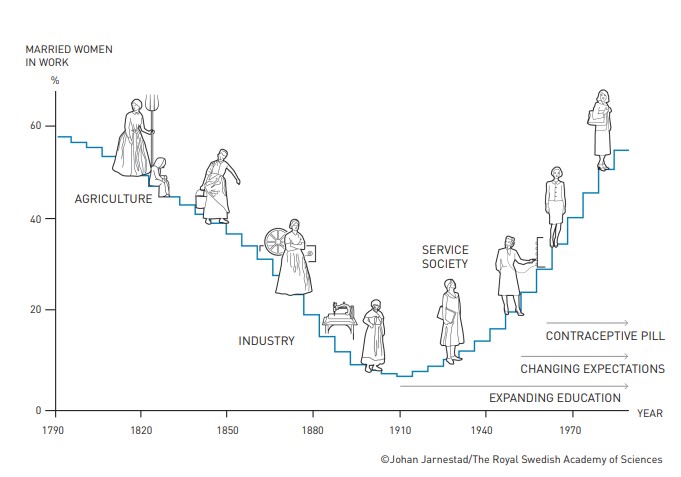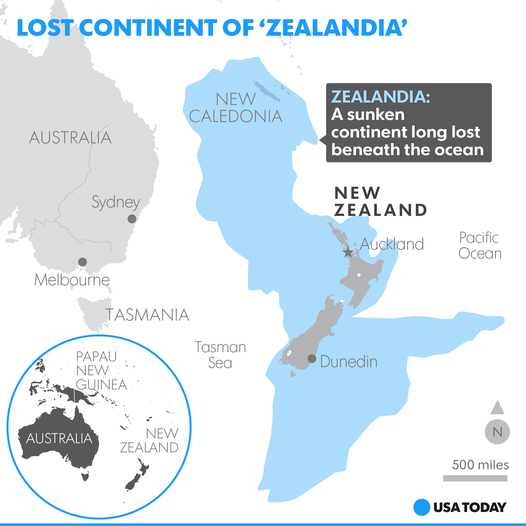Nobel Prize in Economics 2023
American economic historian Claudia Goldin won the 2023 Nobel Prize for economics, for having advanced our understanding of women’s labour market outcomes.
- Nobel Prize in Economics is also known as Sveriges Riksbank Prize in Economic Sciences.
|
Sveriges Riksbank Prize in Economic Sciences
|
- In 1968, Sveriges Riksbank (Sweden’s central bank) established the Prize in Economic Sciences in Memory of Alfred Nobel.
- While Alfred Nobel did not mention the economics prize in his will, the Sveriges Riksbank established the award in 1968.
- The Prize is based on a donation received by the Nobel Foundation from Sveriges Riksbank in 1968.
- The Royal Swedish Academy of Sciences was given the task of selecting the Laureates in Economic Sciences, starting in 1969.
- The first Prize in Economic Sciences was awarded to Ragnar Frisch and Jan Tinbergen in 1969.
- The Prize in Economic Sciences is awarded by the Royal Swedish Academy of Sciences, Stockholm, Sweden, according to the same principles as for the Nobel Prizes that have been awarded since 1901.
|
This is only the 26th time when the economics prize has been awarded to a single laureate.
- Contributions of Claudia Goldin – She gave the 1st comprehensive account of women’s earnings and labour market participation through centuries.
- Her research reveals the causes of change, as well as the main sources of the remaining gender gap.
- Economic growth and Women’s participation – Historically, there is no consistent association between them.
- U-shaped curve – The participation of married women decreased with the transition from an agrarian to an industrial society.
- But it then increased with the growth of the service sector.

- Expectations – Women’s expectations for their future careers is the reason for the slow reduction of employment gap and earning gap between man and women.
- Parenthood effect – The bulk of earnings gap between men and women in the same occupation largely arises with the birth of the first child.
Claudia Goldin will be the 3rd women to be bestowed with the Economic nobel after Elinor Ostrom in 2009 and Esther Duflo in 2019 since it was instituted in 1969.
Claudia’s works
- Understanding the Gender Gap: An Economic History of American Women (Oxford, 1990),
- Career & Family: Women’s Century-Long Journey toward Equity (Princeton University Press, 2021).
References
- The Indian Express | Nobel Prize in Economics 2023
- NobelPrize| Historical Gender Difference in Economy
Indian Ocean Rim Association (IORA)
Sri Lanka will take over the chair of the Council of Ministers (COM) of IORA from Bangladesh for the next two years.
|
IORA
|
|
Founded in
|
1997
|
|
Secretariat
|
Ebene, Mauritius
|
|
India’s membership
|
India is a member
|
- IORA is an inter-governmental organisation.
- Aim – To Strengthen regional cooperation and sustainable development within the Indian Ocean region.
- Parties – 23 Member States and 11 Dialogue Partners.
- All sovereign States of the Indian Ocean Rim are eligible for membership of the Association.
- Neither Pakistan nor Myanmar is a member.
- France has become the latest member.
- Chair - The Council of Ministers, on voluntary offer by Member States, elects a Chair of the Association for a period of two years.
- If there is no voluntary offer, the Chair is elected on the basis of geographical consideration.
People's Republic of Bangladesh chairs IORA’s apex body COM for the period of 2021 to 2023 while India held it during 2011-2013.
- Hierarchical administrative structure
- Council of Foreign Ministers (COM) – It meets annually.
- Committee of Senior Officials (CSO) – It meets twice a year.
|
Indian Ocean
|
- It is the 3rd largest ocean which is home to nearly 2.7 billion people.
- It remains an important lifeline to international trade and transport as it carries
- 50% of the world’s container ships
- 33% of the world’s bulk cargo traffic
- 66% of the world’s oil shipments
- They are divided into sub-regions like Australasia, Southeast Asia, South Asia, West Asia and Eastern & Southern Africa.
|
References
- The Hindu| Sri Lanka to chair IORA
- IORA| Indian Ocean Rim Association
National Frameworks for Climate Services (NFCS)
Recently, a stakeholder consultation for establishing the National Framework for Climate Services in India (NFCS–India) was organized by the India Meteorological Department (IMD).
- NFCS – It is a mechanism for coordinating, facilitating and strengthening collaboration among national institutions.
- Aim - To bring a seamless working platform to integrate users of climate information and services and mitigate climate risks.
- It is based on Global Framework for Climate Services (GFCS).
NFCS-India will facilitate state and central government agencies to collaborate and complement their efforts for timely exchange of climate information tailored to decision making.
- Activities - To strengthen the observational network on land and the seas.
- To improve the data inflow and eventually use it to run weather and climate models for deriving climate predictions.
- Nodal Agency – Indian Meteorological Department (IMD)
IMD enters the 15oth year of its establishment in 2023 which is providing high-quality weather services for the country and its South Asian neighbours.
Global Framework for Climate Services (GFCS)
- Established – In 2009 at the World Climate Conference-3.
- Vision – To enable better management of the risks of climate variability and change, and adaptation to climate change.
- Spearheaded by – World Meteorological Organization (WMO).
- Partnership – Governments and organisations at a global level.
|
Components
|
Priority areas
|
- Observations and Monitoring
- Research, Modelling and Prediction
- Climate Services Information System
- User Interface Platform
- Capacity Building
|
- Water
- Energy
- Health
- Disaster risk reduction
- Agriculture & food security
|
World Climate Conference-3 (WCC-3) held in Geneva, Switzerland in 2009 which was organised by the WMO in collaboration with UNESCO, UNEP, FAO, the International Council for Science (ICSU) and other partners.
References
- Indian Express| National Framework for Climate Services
- GFCS| Global Framework for Climate Services
360 Degree Appraisal System
Indian Navy rolls out '360-degree appraisal' to improve evaluation during promotion.
- Need for new system - The present periodic Confidential Reports by senior officers, has a limitation of a ‘Top-down' approach.
The men and women who serve in white uniforms play a pivotal role in the Indian Navy's 'SHIPS FIRST' approach, which places the safety and effectiveness of naval operations above all else.
- New Appraisal System – Through the new system, officers being considered for promotion, will be undergone a peer review by their colleagues as well as subordinates.
- Survey – It comprises a spectrum of questions covering aspects like professional knowledge, leadership attributes, suitability in war/ crisis and potential for holding higher ranks.
- Quantifying the survey –It is done by nominated Board of Officers, headed by a Flag Officer for independent analyses.
- Feedback Mechanism – The findings are informed to the officers to effect behavioural changes and improvements.
- This initiative is towards maintaining a 'Combat Ready, Credible, Cohesive and Future Proof Force’.
At present, Indian Navy has around 10,000 officers which includes over 600 women.
References
- Times of India| Indian Navy’s Promotion System
- PIB| 360 Degree Appraisal System
Zealandia
An international team of geologists and seismologists have now created a new map of Zealandia, the Earth’s forgotten 8th continent.
- Historical Formation – Approximately 83 million years ago, the supercontinent Gondwana was pulled apart.
- It resulted in the beginning of the present-day continents and also with the creation of Zealandia.
- Geographical phenomena – By approximately 23 million years ago, the landmass may have completely submerged.
- Currently, 94% is under the sea and the remaining 6% is what we identify as New Zealand and neighbouring islands.
- It is also substantially larger than the Arabian Peninsula, the world’s largest peninsula, and the Indian subcontinent.
- Economic Significance – It supports substantial inshore fisheries and contains gas fields, of which the largest known is the New Zealand Maui gas field, near Taranaki.

References
Down to Earth | Zealandia

